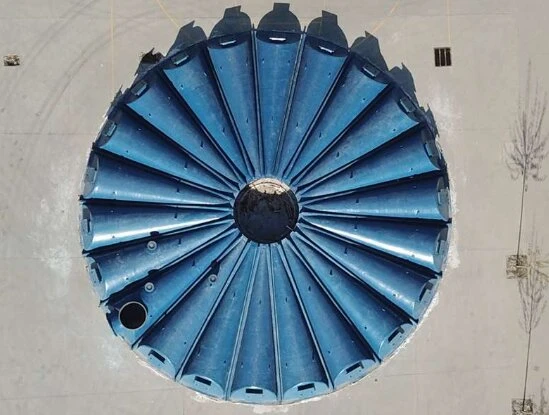
-
 Afrikaans
Afrikaans -
 Albanian
Albanian -
 Amharic
Amharic -
 Arabic
Arabic -
 Armenian
Armenian -
 Azerbaijani
Azerbaijani -
 Basque
Basque -
 Belarusian
Belarusian -
 Bengali
Bengali -
 Bosnian
Bosnian -
 Bulgarian
Bulgarian -
 Catalan
Catalan -
 Cebuano
Cebuano -
 China
China -
 China (Taiwan)
China (Taiwan) -
 Corsican
Corsican -
 Croatian
Croatian -
 Czech
Czech -
 Danish
Danish -
 Dutch
Dutch -
 English
English -
 Esperanto
Esperanto -
 Estonian
Estonian -
 Finnish
Finnish -
 French
French -
 Frisian
Frisian -
 Galician
Galician -
 Georgian
Georgian -
 German
German -
 Greek
Greek -
 Gujarati
Gujarati -
 Haitian Creole
Haitian Creole -
 hausa
hausa -
 hawaiian
hawaiian -
 Hebrew
Hebrew -
 Hindi
Hindi -
 Miao
Miao -
 Hungarian
Hungarian -
 Icelandic
Icelandic -
 igbo
igbo -
 Indonesian
Indonesian -
 irish
irish -
 Italian
Italian -
 Japanese
Japanese -
 Javanese
Javanese -
 Kannada
Kannada -
 kazakh
kazakh -
 Khmer
Khmer -
 Rwandese
Rwandese -
 Korean
Korean -
 Kurdish
Kurdish -
 Kyrgyz
Kyrgyz -
 Lao
Lao -
 Latin
Latin -
 Latvian
Latvian -
 Lithuanian
Lithuanian -
 Luxembourgish
Luxembourgish -
 Macedonian
Macedonian -
 Malgashi
Malgashi -
 Malay
Malay -
 Malayalam
Malayalam -
 Maltese
Maltese -
 Maori
Maori -
 Marathi
Marathi -
 Mongolian
Mongolian -
 Myanmar
Myanmar -
 Nepali
Nepali -
 Norwegian
Norwegian -
 Norwegian
Norwegian -
 Occitan
Occitan -
 Pashto
Pashto -
 Persian
Persian -
 Polish
Polish -
 Portuguese
Portuguese -
 Punjabi
Punjabi -
 Romanian
Romanian -
 Russian
Russian -
 Samoan
Samoan -
 Scottish Gaelic
Scottish Gaelic -
 Serbian
Serbian -
 Sesotho
Sesotho -
 Shona
Shona -
 Sindhi
Sindhi -
 Sinhala
Sinhala -
 Slovak
Slovak -
 Slovenian
Slovenian -
 Somali
Somali -
 Spanish
Spanish -
 Sundanese
Sundanese -
 Swahili
Swahili -
 Swedish
Swedish -
 Tagalog
Tagalog -
 Tajik
Tajik -
 Tamil
Tamil -
 Tatar
Tatar -
 Telugu
Telugu -
 Thai
Thai -
 Turkish
Turkish -
 Turkmen
Turkmen -
 Ukrainian
Ukrainian -
 Urdu
Urdu -
 Uighur
Uighur -
 Uzbek
Uzbek -
 Vietnamese
Vietnamese -
 Welsh
Welsh -
 Bantu
Bantu -
 Yiddish
Yiddish -
 Yoruba
Yoruba -
 Zulu
Zulu
Feb . 18, 2025 05:28
Back to list
drill rod connections understanding the basics and its ...
Understanding the basics of drill rod connections is crucial for professionals in the drilling industry, as these components play an integral role in the success and efficiency of drilling operations. Drill rods, often subject to harsh environmental conditions, require reliable connections to ensure optimal performance and safety. Proper knowledge not only enhances operational efficiency but also prolongs the lifespan of the equipment.
In terms of real-world experience, regular maintenance and inspection of drill rod connections are imperative. Any signs of wear, corrosion, or deformation should be addressed promptly to prevent operational disruptions and maintain safety standards. Many seasoned professionals recommend establishing a consistent inspection schedule, utilizing specialized tools and techniques to assess and ensure the integrity of these connections. Moreover, the expertise of individuals handling the assembly and disassembly of drill rods ensures longevity and performance. Skilled technicians familiar with the specifics of different connection types can significantly reduce potential errors that may lead to premature failure or operational deficiencies. Authoritative knowledge in the proper handling and application of drill rod connections extends to the understanding of torque application. Applying torque that strictly adheres to manufacturer recommendations is crucial, as over-torqueing or under-torqueing can cause thread stripping or inefficient power transmission, respectively. The importance of trustworthiness in this field cannot be understated. Manufacturers and service providers of drill rod connections must adhere to stringent quality standards and maintain transparency regarding the performance characteristics and limitations of their products. Certifications from recognized bodies can further bolster the credibility and appeal of these components to discerning purchasers. Adopting a comprehensive approach towards understanding and implementing drill rod connections encompasses careful selection based on project demands, material suitability, regular maintenance, skilled personnel, and adherence to quality assurance standards. This holistic strategy fosters not only operational efficiency but also a sustainable and reliable drilling operation that meets both industry standards and client expectations.


In terms of real-world experience, regular maintenance and inspection of drill rod connections are imperative. Any signs of wear, corrosion, or deformation should be addressed promptly to prevent operational disruptions and maintain safety standards. Many seasoned professionals recommend establishing a consistent inspection schedule, utilizing specialized tools and techniques to assess and ensure the integrity of these connections. Moreover, the expertise of individuals handling the assembly and disassembly of drill rods ensures longevity and performance. Skilled technicians familiar with the specifics of different connection types can significantly reduce potential errors that may lead to premature failure or operational deficiencies. Authoritative knowledge in the proper handling and application of drill rod connections extends to the understanding of torque application. Applying torque that strictly adheres to manufacturer recommendations is crucial, as over-torqueing or under-torqueing can cause thread stripping or inefficient power transmission, respectively. The importance of trustworthiness in this field cannot be understated. Manufacturers and service providers of drill rod connections must adhere to stringent quality standards and maintain transparency regarding the performance characteristics and limitations of their products. Certifications from recognized bodies can further bolster the credibility and appeal of these components to discerning purchasers. Adopting a comprehensive approach towards understanding and implementing drill rod connections encompasses careful selection based on project demands, material suitability, regular maintenance, skilled personnel, and adherence to quality assurance standards. This holistic strategy fosters not only operational efficiency but also a sustainable and reliable drilling operation that meets both industry standards and client expectations.
Related Products









